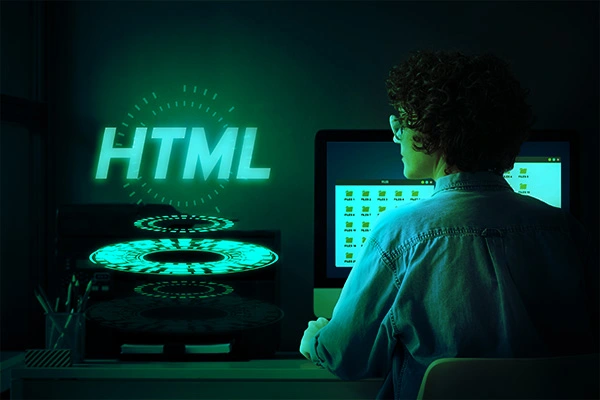A Beginner’s Guide to Web Development

While you were using the website on your computer or on your device have you ever wondered how it's created or how it works on your phone? Whether it a group of images of mages or a block of text grouped together? If so how does it work the way it works? In this guide, we will explore the basics of web development and the essential technologies that are needed to know to create your own.
What is web development?
It's a process of creating and maintaining a website and web application that runs on the internet. It involves coding, designing, and maintaining websites to ensure they function properly and it uses many tools and logic to achieve this task.
There are mainly three main types of web development :
- Front-End Development
- Back-End Development
- Full-Stack Development
Front-End Development
it's the part that the user like us sees on the screen and it focuses on the experience that it gives to the user while interacting with it and it's an important part of the website. The technologies used here are HTML, CSS, and JavaScript.
Back-End Development
it's the part where the data from the front end gets stored when we interact with it and it's where we give particular tasks to the front end. It handles the server, database, and application logic. The tech used here are Python, Ruby, PHP, Node.js, etc. and there are many other tools that you can use to do it.
Full-Stack Development
It combines both the front end as well as the back end to create a website with all the technologies mentioned above and where you can create a flawless web to launch to the internet for others to use.
Essential Skills Need for Web Developer
1. HTML
HTML is the backbone of web development and it was created as a simple way to share and access documents over the Internet. Since its inception, HTML has evolved significantly, becoming the foundation of web development. It uses tags to structure content, defining elements like headings, paragraphs, lists, and links, facilitating document organization and readability for web browsers. It supports interactive elements like forms and multimedia embedding, enabling user engagement and dynamic content creation within web pages. As it is compatible with various devices and operating systems, HTML ensures consistent rendering and accessibility across different platforms. It can also be integrated with various other tools like CSS, JavaScript, etc. allowing the developers to create rich interactive web experiences.
2. CSS (Cascading Style Sheets)
Cascading Style Sheets (CSS) is a styling tool used for specifying the presentation and styling of a document written in a markup language such as HTML and giving it a fresh look for the web so that it would be user-friendly and won't change the aesthetics as well. It helps in controlling the look and feel of the website enabling design consistency across different devices and optimizing the performance throughout the website
3. Version Control
In software development, keeping track of code changes, managing multiple versions of code, and collaborating seamlessly across teams is very important. This is where version control systems (VCS) come into play, and Git is one of the most popular version control systems used today. It helps developers to track the changes done over time and it keeps the record of the modification ever done.
Steps To Start Web Development
Step 1 : Set Your Environment
You need a code editor to write or edit your code and manipulate your web as you need and it can be done using VS Code, Sublime Text, etc., and can use browsers like Chrome or Firefox for testing.

Step 2 : Learn The Basic
Start learning basic tools like HTML, CSS, and JavaScript and to learn those you can explore free resources like W3School, Mozilla MDN, or geeks for geeks for geeks, etc.
Step 3 : Build Projects
Build projects by creating simple websites for practice and work on for example :
- Portfolio site
- To do site
- Timetable setter
- Daily reminder
- Simple calculator
- Task tracker
- BMI calculator
Step 4 : Explore framework and Libraries
For the front end you can use Bootstrap, React, and Angular go through these tools understand them try to implement them in the projects that you have created, and make your front end more creative and responsive as well.
For the backend, you can use Django, Express, and Flask which can be used to integrate the different front-end pages and give a specific task for each and every model that has been created.
Step 5 : Responsive designs
Now learn how to make your projects responsive to different devices and you can use your project across different devices and can be used in the future.
Tips For Success
To be successful in this field you need to practice it daily and it will help you improve your coding skills design skills and logical skills. And if you get into some unlovable error that you find difficult to solve or to implement then you can look into the web and engage with communities like Stack Overflow or Reddit for your guidance
try to stay updated as well as possible because this field never stops developing into new and gets more complicated if you don't and you can do that by attending webinars reading articles staying updated with new tools never stopping learning about new products and designs and so on and so forth.
The most important thing is to stay patient cos learning a new skill takes time nothing is achieved overnight thing takes time and celebrate every small win so that you will be motivated to achieve more in the future.








